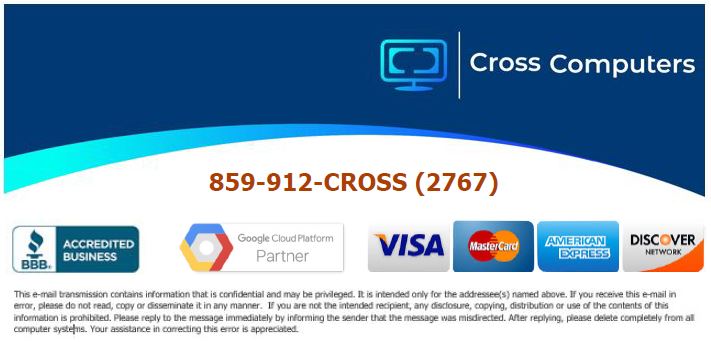If you think your business is at low risk of a cyber attack because it’s too small for cybercriminals to notice, it’s time to change your thinking. Today, small businesses risk becoming victims of cybercrimes, and cyber criminals choose their victims carefully by going after easy targets. Ensure your data remains secure with the following network security tips for small businesses.
1. Educate employees
One of the biggest cybersecurity threats to small businesses is human error. This can include mistakes like leaving accounts open on shared computers, failing to update passwords regularly, accidentally downloading malicious files, and giving away information through phishing scams. Educating your employees about proper cybersecurity can help you mitigate some of these risks to the network. Let them know how to spot the signs of a phishing scam and what to do if they become victims. Also, talk about the importance of software updates and how to keep business and personal devices updated. Make sure that you have security policies in place and that your employees understand these policies. These policies should cover device and network access rules, password strength and frequency of change, best practices on file sharing, security application policies, reporting procedures on lost or stolen devices, and more.
2. Keep software updated
Another common threat for small businesses is outdated software. Whether it’s a website content management system, financial or inventory-tracking software, anti-virus programs, or operating systems, you should keep all your software up-to-date. Older software versions are more accessible for hacking because cybercriminals have learned where the loopholes are. Updates patch those security vulnerabilities and improve functionality to protect your business against viruses, malware, and other forms of hacking. In some cases, software updates aren’t available to older hardware models, so you may need to update your computers and other hardware every few years.
3. Safeguard your WiFi
Your company’s WiFi network can be a point of entry for cybercriminals. However, there are steps you can take to secure your Internet connection. First, ensure you’re using a firewall and that all your data that passes through the network is encrypted. Network operations teams typically rely on a fragmented set of monitoring and troubleshooting tools, leading to ineffective management and network instability. IT organizations must adopt a new tool strategy emphasizing integration, consolidation, and advanced analytics, including big data. Password-protect the router and only allow access to employees. Consider hiding your network so others can’t try to access it, which you can do by setting up your router so it doesn’t broadcast your network name. If your business needs a public WiFi option for customers or vendors to access, set up a second network specifically for this purpose. However, employees should ensure they are connected to a secure network, not a public one, especially when accessing sensitive business data.
4. Use two-factor authentication
When you have the opportunity to use two-factor authentication, use it. Cloud databases are commonly hijacked when users haven’t turned on authentication or left outdated versions exposed. Be sure to establish safe practices when using and accessing cloud services; don’t pass the security responsibility to the cloud provider. Cybersecurity is a problem for businesses of any size, but taking proper precautions can significantly reduce the risk of becoming the next cyber victim.

